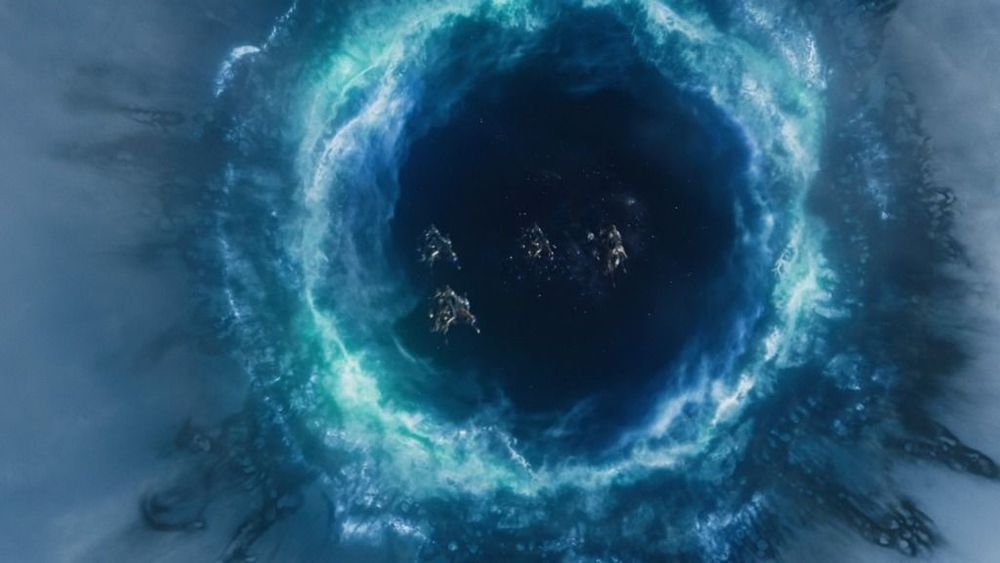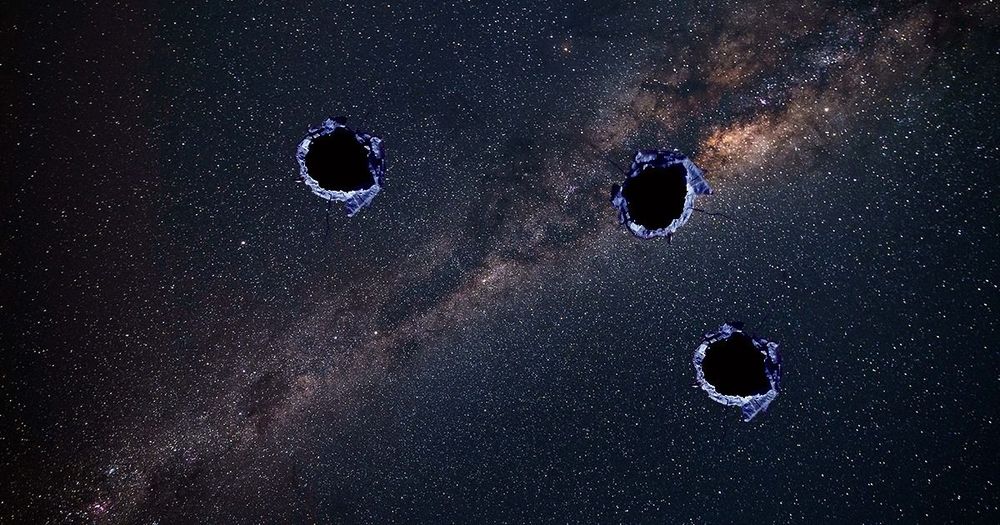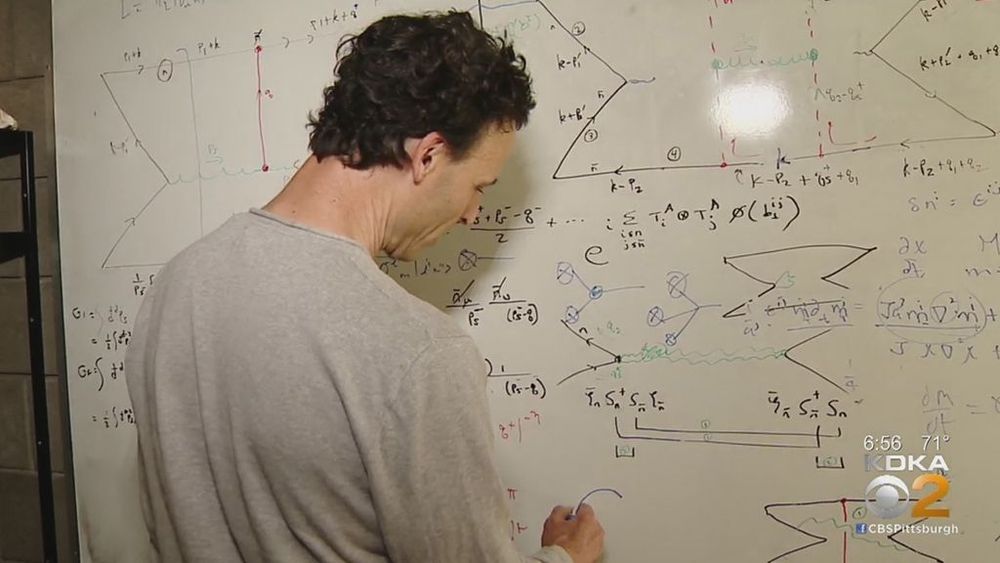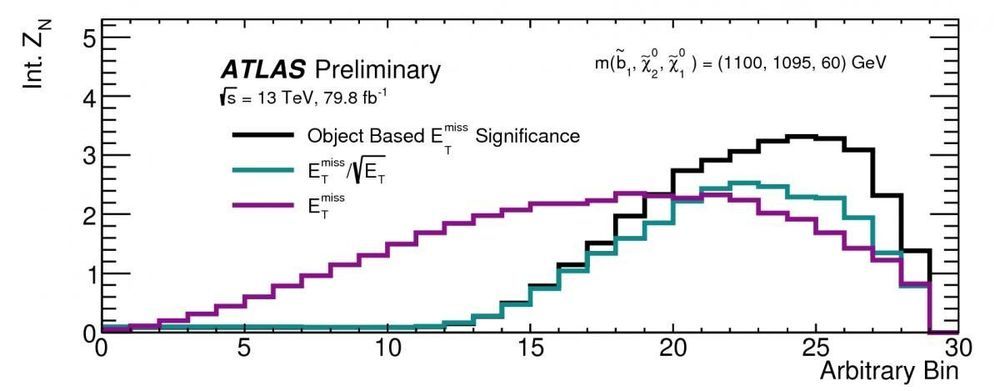Archive for the ‘cosmology’ category: Page 344
May 17, 2019
Quantum black hole study opens bridge to another universe
Posted by Quinn Sena in categories: cosmology, quantum physics
Circa 2013
Physicists have long thought that the singularities associated with gravity (like the inside of a black hole) should vanish in a quantum theory of gravity. It now appears that this may indeed be the case. Researchers in Uruguay and Louisiana have just published a description of a quantum black hole using loop quantum gravity in which the predictions of physics-ending singularities vanish, and are replaced by bridges to another universe.
May 17, 2019
Physicists Think You Could Be Rescued from a Black Hole — But Don’t Risk It
Posted by Quinn Sena in categories: cosmology, quantum physics
DENVER — Researchers have developed a new, unspeakably dangerous, and incredibly slow method of crossing the universe. It involves wormholes linking special black holes that probably don’t exist. And it might explain what’s really going on when physicists quantum-teleport information from one point to another — from the perspective of the teleported bit of information.
Daniel Jafferis, a Harvard University physicist, described the proposed method at a talk April 13 here at a meeting of the American Physical Society. This method, he told his assembled colleagues, involves two black holes that are entangled so that they are connected across space and time.
May 17, 2019
Computronium universe – computation limits of computronium and limits to the universe
Posted by Quinn Sena in categories: cosmology, Ray Kurzweil

Ray Kurzweil discusses having a universe filled with Computronium.
He discusses this happening within 200 years if wormholes or some other means allow faster than light travel.
May 17, 2019
From the Farside –“Ripples in Spacetime Created By Wormholes Leading to Another Universe”
Posted by Quinn Sena in categories: cosmology, physics
In June of 2018 we posted that a team of physicists explored the possibility that the black holes we ‘observe’ in nature are no such thing, but rather some type of exotic compact objects (ECOs) that do not have an event horizon. The scientific collaborations LIGO and Virgo have detected gravitational waves from the fusions of two black holes, inaugurating a new era in the study of the cosmos. But what if those ripples in space-time were produced wormholes that can be traversed to appear in another universe.
“Wormholes do not have an event horizon, but act as a space-time shortcut that can be traversed, a kind of very long throat that takes us to another universe,” says Pablo Bueno from KU Leuven University (Belgium). “The confirmation of echoes in the LIGO or Virgo signals would be a practically irrefutable proof that astrophysical black holes don’t exist. Time will tell if these echoes exist or not. If the result were positive, it would be one of the greatest discoveries in the history of physics.”
“Dark Hearts of the Cosmos” –Dazzling New Mergers of Black Holes and Neutron Stars Announced
May 16, 2019
A “Dense Bullet of Something” Blasted Holes in the Milky Way
Posted by Quinn Sena in category: cosmology
O.o…
Scientists say that something mysterious punched gigantic, cosmic “bullet holes” in parts of the Milky Way.
There’s a string of holes in a long stream of stars called GD-1 that suggests that some yet-undiscovered thing blasted its way through, according to research presented to the American Physical Society last month and first reported by Live Science. Harvard-Smithsonian astrophysicist Ana Bonaca, the scientist who discovered the cosmic crime scene, suspects that the gigantic “bullet holes” may have been carved out by invisible dark matter.
Continue reading “A ‘Dense Bullet of Something’ Blasted Holes in the Milky Way” »
May 16, 2019
The Real Life Sheldon & Leonard: CMU Physics Professors Thank ‘Big Bang Theory’ For Making Love Of Science More Accepted
Posted by Genevieve Klien in categories: cosmology, science
Two Carnegie Mellon University physics professors thank “The Big Bang Theory” for making loving science more accepted.
May 14, 2019
ATLAS experiment sets strong constraints on supersymmetric dark matter
Posted by Quinn Sena in categories: cosmology, particle physics
Dark matter is an unknown type of matter present in the universe that could be of particle origin. One of the most complete theoretical frameworks that includes a dark matter candidate is supersymmetry. Many supersymmetric models predict the existence of a new stable, invisible particle called the lightest supersymmetric particle (LSP), which has the right properties to be a dark matter particle.
The ATLAS Collaboration at CERN has recently reported two new results on searches for an LSP that exploited the experiment’s full Run 2 data sample taken at 13 TeV proton-proton collision energy. The analyses looked for the pair production of two heavy supersymmetric particles, each of which decays to observable Standard Model particles and an LSP in the detector.
May 14, 2019
Researchers successfully sent a simulated elementary particle back in time
Posted by Quinn Sena in categories: cosmology, particle physics, quantum physics
The results are fascinating and spur the imagination, but don’t start investing in flux capacitors yet. This experiment also shows us that sending even a simulated particle back in time requires serious outside manipulation. To create such an external force to manipulate even one physical particle’s quantum waves is well beyond our abilities.
“We demonstrate that time-reversing even ONE quantum particle is an unsurmountable task for nature alone,” study author Vinokur wrote to the New York Times in an email [emphasis original]. “The system comprising two particles is even more irreversible, let alone the eggs — comprising billions of particles — we break to prepare an omelet.”
A press release from the Department of Energy notes that for the “timeline required for [an external force] to spontaneously appear and properly manipulate the quantum waves” to appear in nature and unscramble an egg “would extend longer than that of the universe itself.” In other words, this technology remains bound to quantum computation. Subatomic spas that literally turn back the clock aren’t happening.
Continue reading “Researchers successfully sent a simulated elementary particle back in time” »
May 14, 2019
Neutrinos Linked With Cosmic Source for the First Time
Posted by Quinn Sena in category: cosmology
High-energy neutrinos have been traced back to a flaring supermassive black hole known as a blazar. The long-sought link opens the door to an entirely new way to study the universe.
















